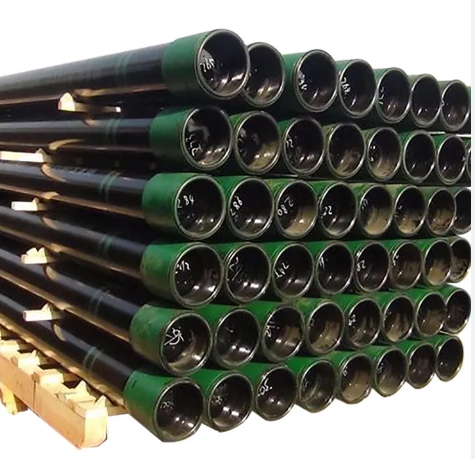Although casing pipe and carrier pipe are similar in name, they are different in structure and function.
Water pipes are mainly used to transport liquids such as water and oil. They are common pipe equipment in municipal water supply and irrigation systems. Unlike tubing, carrier pipes can be widely used in ground or underground fluid systems, but tubing is mainly used for the transportation of oil.
Simply put, there are differences in structure and function between casings and water pipes: casings, as part of the wellbore, play a supporting and protective role without withstanding internal fluid pressure; water pipes are the pipes that actually transport fluids and are Placed inside the casing and withstand the pressure of the internal fluid. This configuration allows for safer and more efficient fluid transfer while protecting the wellbore from damage.
The specific differences are shown in the table below
1. Casing
Casing is an equipment used for oil well drilling and belongs to OCTG (Oil Country Tubular Goods) pipe. It usually has a thicker wall and can be used to withstand pressure and maintain the stability of the well wall. At the same time, it can also The annular space between the casing and the well wall is filled with cement. The casing helps to isolate different geological layers, prevents the fluids in different strata from mixing with each other, and ensures the purity of oil and gas resources. The industry and internationalization of petroleum casing The standards are API SPEC 5CT, etc. In order to ensure performance and quality, oil casing is usually made of carbon steel and stainless steel as raw materials.
2.Carrier Pipe
Water pipes are mainly used to transport liquids such as water and oil. They are common pipe equipment in municipal water supply and irrigation systems. Unlike tubing, carrier pipes can be widely used in ground or underground fluid systems, but tubing is mainly used for the transportation of oil.
3.Casing Pipe vs Carrier Pipe
Simply put, there are differences in structure and function between casings and water pipes: casings, as part of the wellbore, play a supporting and protective role without withstanding internal fluid pressure; water pipes are the pipes that actually transport fluids and are Placed inside the casing and withstand the pressure of the internal fluid. This configuration allows for safer and more efficient fluid transfer while protecting the wellbore from damage.The specific differences are shown in the table below
| Feature | Casing Pipe | Carrier Pipe |
|---|---|---|
| Primary Function | To provide structural support to the wellbore and prevent collapse. | To transport fluids (such as oil, gas, or water) within the wellbore. |
| Pressure Containment | Does not contain pressure; it is vented. | Designed to contain the pressure of the fluid being transported. |
| Material | Typically made of steel or other strong, durable materials. | Can be made of steel, PVC, HDPE, or other materials suitable for fluid transport. |
| Wall Thickness | Generally thicker to withstand geological stresses without buckling. | Thinner compared to casing pipe since they are designed to contain fluid pressure, not geological stresses. |
| Diameter | Larger diameter to encompass the wellbore and any internal pipes. | Smaller diameter; its size is determined by the required flow capacity for the fluid. |
| Design | May have perforations or slots for specific applications like filtering or venting. | Designed for efficient fluid flow with minimal resistance and friction. |
| Standards | Adheres to standards like API SPEC 5CT for oil and gas applications. | May follow different standards depending on the material and application, such as ASTM for PVC pipes. |
| Installation | Installed first and then cemented into place. | Installed within the casing pipe after the casing is in place. |
| Maintenance | Generally requires less maintenance due to its structural role. | May require more frequent inspection and maintenance due to contact with the transported fluid. |
| Applications | Used in oil and gas wells, water wells, and other types of boreholes. | Used for the actual conveyance of fluids in various industrial, municipal, and agricultural applications. |









